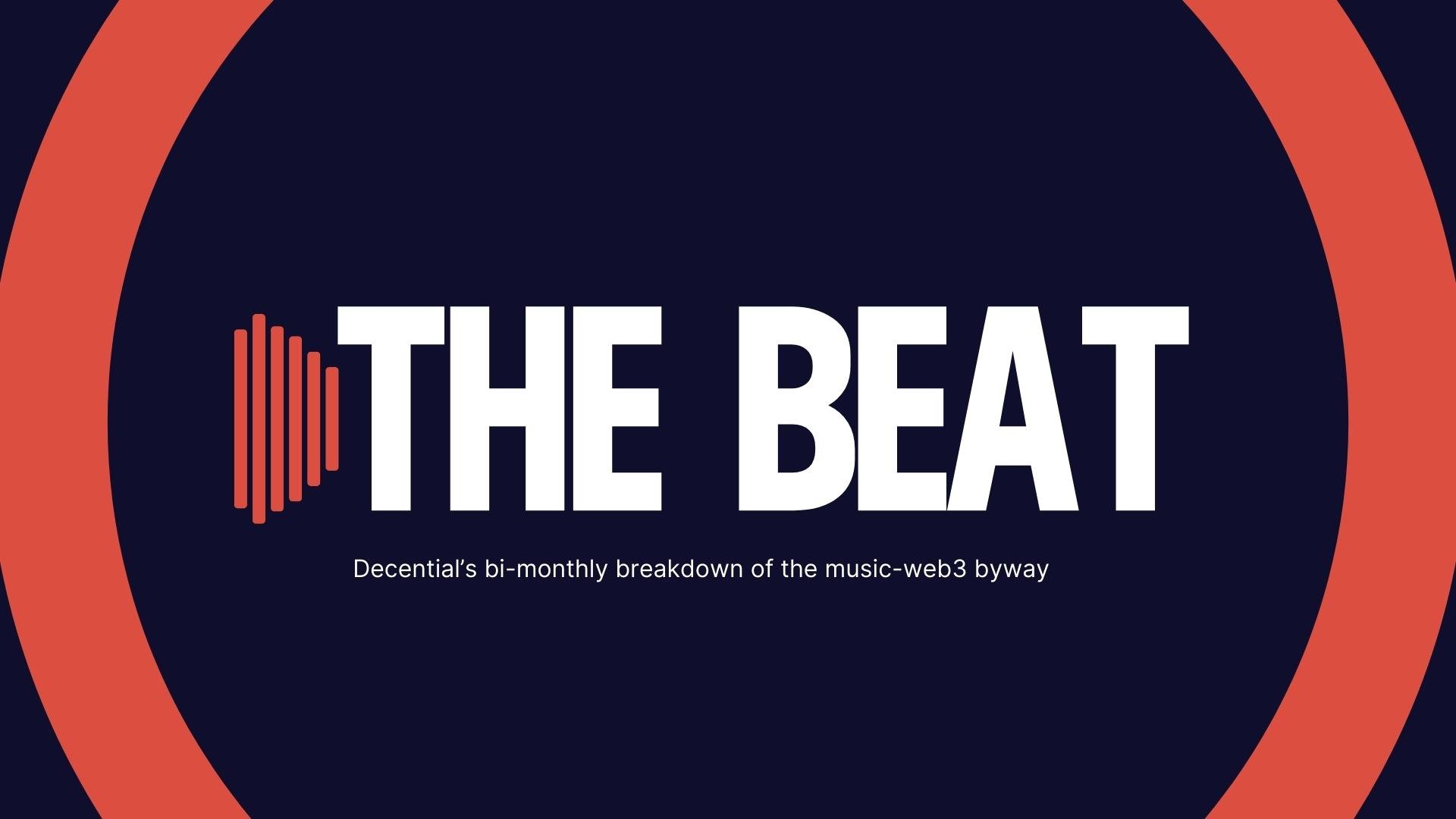The Beat: Grunge Following the Casio 80s, The Old Ways Aren’t Working Anymore Rock & Roll Hall of Fame Shame
Battling the ennui that can come from soulless AI generated music

Welcome to The Beat, Decential’s bi-monthly breakdown of the music-web3 byway.
Like most things in web3, the music space moves at breakneck speeds, issuing regular bouts of hope, cringe and FOMO. That combination of qualities blur the essence of the movement – on the enduring solutions to legacy industry problems and the people building them. Let’s focus on the essence; the rest, as Alex Ross wrote, is noise.
Hello, World!
I’ve admittedly been in an existential slump about the frenetic development of AI – and its sundry implications. I was heartened, though, reading Rob Abelow’s newsletter, Where Music’s Going.
Listed among a few areas of growth he foresees with emergent AI systems was “humanity in demand.” “A huge movement will return focus to artists, originality & authenticity,” he writes. “With an endless sea of faceless music, fans will seek out something more. Artists forging a real connection & building community will win. Think grunge following the Casio 80s.”
Fingers crossed.
One reason AI is so omnipresent is because “it’s value is clear,” Abelow writes. It makes things simpler and faster. Easy.
Web3 music, in contrast, has what he calls “adoption paradox,” because:
It requires wide adoption to show full value
Adoption is difficult because value is non-obvious
It continues to exist mostly theoretically, and even in practice it can be difficult to understand. The music non-fungible token (NFT) platform Sound.xyz, for instance, just launched a feature called Sound Swap, which introduces a dynamic pricing curve that alleviates pain points surrounding pricing, supply and liquidity.
I’m into it – it makes sense. But try to explain this feature to someone who hasn’t been onboarded to web3. The value is non-obvious because it requires a lot of technical context, like what’s a liquidity pool? What caused these pain points in the first place? And still, most simply, what exactly is an NFT and why should I collect (or mint) one? Sound largely relegates the mechanics to the background on the platform itself, and ideally we see a future of web3 music that is as intuitive as a streaming platform, but we’re not there yet.
Still, onwards, because…
The old shit doesn’t work anymore
“The old shit doesn’t work” anymore is the title of a recent piece by Metalabel’s Yancey Strickler – who consistently publishes thoughtful content about culture (“Worldbuilding is creative resilience” is particularly fascinating).
In the piece, Strickler is talking to a head of a record label he respects, who’s lamenting the nonviability of the old ways. “The established patterns for releasing music, going on tour, and putting work into culture, he explained, were no longer relevant,” writes Strickler. “The infrastructure, the audiences, and the money just weren’t there.”
The piece goes on to outline myriad portents of failure, from the growing impracticality of touring – recently the only feasible lifeline for musicians forced into a streaming economy that pays fractions of a penny – to an America without movie theaters.
But one quote from the unnamed person rang through the gloom: “I don’t know where things are going, but I know the old ways aren’t working. When I look at what you’re doing it’s interesting and at least it’s optimistic. So I‘m here.”
There are indeed interesting things happening – and it’s not all theoretical. Even Ticketmaster launched NFT-gated ticket pre-sales, which is an interesting use case for all the reasons Abelow explains here. I don’t expect them to decentralize their efforts anytime soon, but at least it’s interesting.
Sound Swap is interesting, too. The artist Danial Allan just raised $1 million in a venture capital-esque seed round – let’s see what happens, that’s interesting. Or blockchain enabling a “technological underpinning to monetize differently” – as Vickie Naumann writes for Music Ally, where she discusses the empowerment of niche and the championing of “many small tents.” That’s interesting. Or just the sheer potential for sketching out an on-chain ecosystem centered around “a composable stack of Public Good infrastructure,” as Dan Fowler did, with typically thoughtful rationale for his newsletter, The Liminal Space.
These things are all the easier to embrace when news arrives like Spotify spending less than 10 percent of their $100 million diversity fund in its first year (originally launched to appease those protesting the platform’s contact with Joe Rogan, which was worth more than the entire fund). Or the Twitters, which are deactivating some profiles' two-factor authentication and demanding payment to turn it back on (hello alternatives like Lens and Farcaster).
Every day we have more reasons to walk toward decentralization and more tools to achieve a more equitable future. It will take time, resilience and the proper stewards – and we should hesitate before donning rose-colored glasses. It’s not all sunshine. But progress is possible, and that’s interesting.
Coda
For this beat’s coda, in honor of the end of Women’s History Month, I want to highlight Courtney Love’s piece for The Guardian, where she dropped some eye-opening stats about the Rock & Roll Hall of Fame. A touch more than 8 percent of today’s inductees are women. It took more than 30 years of eligibility for Carole King and Nina Simone to gain a spot. “Most egregiously,” Love writes, “Tina Turner was inducted as a solo artist three decades after making the grade alongside her abuser, Ike.”
So go listen to music by women. Here’s a Nina song that always hits me deep.
